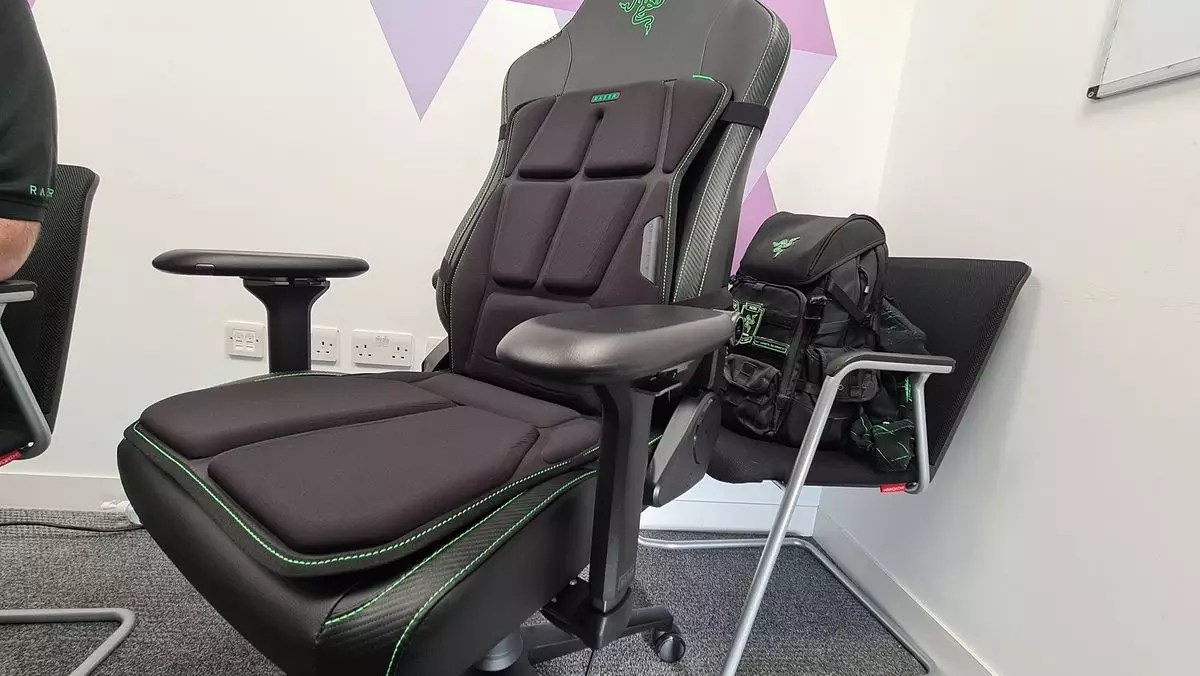Razer has once again ventured into the realm of gaming peripherals, this time with an intriguing device known as the Razer Freya—a haptic gaming cushion that aims to elevate the gamer’s experience by integrating physical sensations with virtual gameplay. This cushion is designed to be effortlessly integrated into any gaming chair; players simply place it on their seats, connect it to a power source, and allow the cushion’s six built-in motors to spring into action, vibrating in sync with the in-game dynamics, sounds, or music. On the surface, this concept appears straightforward: enhance immersion through tactile feedback. However, the execution and user experience may be more complex than advertised.
The Mechanics of Haptic Feedback
At the core of Razer Freya is the notion that physical sensations can significantly amplify the gaming experience. By translating in-game actions into vibrations felt through the cushion, Razer hopes to create a more engaging environment for players. During a pre-release testing phase, I was seated upon a Razer gaming chair equipped with the device, and I could easily note the cushion’s capabilities. Initially, the sensations range from mild rumbles during mundane gameplay to increasingly intense vibrations when executing specific actions—like slicing through a foe in a game such as Final Fantasy XVI.
While Razer has positioned this product as a novel and essential addition for gamers, the need for specific in-game support is quite pronounced. Games like Hogwarts Legacy and Silent Hill are mentioned as titles supporting Razer Freya natively, which indicates a reliance on developers to integrate this feature meaningfully. Furthermore, the introduction of an Unreal Engine 5 plugin may streamline future compatibility, yet it inadvertently places the cushion’s success in the hands of the gaming industry’s developers, which could limit its appeal.
The experience of engaging with Freya is subjective. While playing Final Fantasy XVI, I found the cushion’s vibrating pads responsive and immersive—different actions activated distinct pads across the cushion, which theoretically aligned well with what was happening on-screen. However, as the intensity ramped up, I noticed a growing desensitization to the varying sensations, which led me to question the long-term engagement potential of such a device. This could be particularly problematic for players who spend countless hours gaming; the tactile feedback might become a noise rather than a nuanced experience.
Additionally, as someone who enjoys sim racing, my initial enthusiasm for incorporating haptic feedback into this space wasn’t as rewarding as anticipated. Imagining the Freya integrated with high-quality racing wheels and simulators, I recognized the potential for a more immersive experience, yet as I engaged with the cushion, I realized it only scratched the surface of what true sim racing immersion entails, which usually requires a substantial investment in high-end rigs.
Despite the innovation, I was left skeptical regarding Razer Freya’s overall value proposition, especially as it comes with a $300 price tag. Even with the added feedback of listening to rhythmic music—such as a track by Chase & Status and Stormzy—my experience felt underwhelming. I had also tested it alongside Razer’s new haptic headset, the Kraken V4 Pro, but found myself overwhelmed in a way that dulls the enjoyment rather than enhances it. This dual haptic experience felt reminiscent of being too close to a nightclub speaker, rather than providing the immersive thrill I expected.
For gamers who are always seeking the newest peripherals and have a penchant for novel experiences, the Razer Freya may be worth exploring. However, for those of us who prioritize substance over novelty, this cushion may not justify its cost.
The Razer Freya presents an interesting step towards improving immersive gameplay experiences through haptic feedback. Yet, whether it can catch on as a staple in gaming setups remains uncertain. The cushion attempts to bridge a gap in the market for tactile interaction but ultimately risks being classified as another underwhelming toy in the gaming peripheral landscape. It may resonate strongly with some players, particularly in sim racing or those with deep pockets eager to engage in novelty. For others, however, it may fall short, leaving us to weigh the cost against the potential thrill of multi-sensory gaming.


Leave a Reply